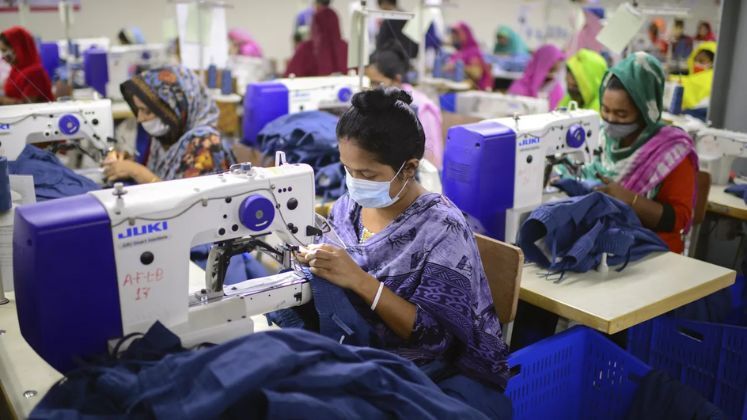
In a remarkable demonstration of resilience, Bangladesh’s ready-made garment (RMG) sector has achieved significant growth in both production and exports during the first half of the 2024-25 fiscal year, despite facing considerable political unrest and dissatisfaction.
From July to December 2024, Bangladesh’s apparel exports reached US $ 19.8877 billion, marking a substantial increase of 13.28 per cent from the US $ 17.5569 billion recorded in the same period the previous fiscal year, according to data from the Bangladesh Export Promotion Bureau (EPB).
The garment sector, which constitutes 81 per cent of the country’s total exports, played a pivotal role in Bangladesh’s overall export performance, contributing to total exports of US $ 24.53 billion during the first half of the fiscal year. In December alone, the country exported goods worth US $ 4.62 billion, a 17.72 per cent increase compared to December 2023. Of this, ready-made garments accounted for US $ 3.7751 billion, with woven products generating US $ 1.8787 billion and knitwear contributing US $ 1.8918 billion.
The growth trajectory of the RMG sector is noteworthy, especially considering the backdrop of political upheaval that began with intensified anti-discrimination movements in July 2024 and culminated in the ousting of the Sheikh Hasina government in August. Despite these disruptions, garment industry stakeholders managed to sustain production and export operations.
Throughout 2024, Bangladesh’s RMG exports totaled US $ 38.48 billion, a 7.23 per cent increase from US $ 35.89 billion in 2023. The year was marked by fluctuations in monthly exports, with negative growth recorded in two months but a rebound in ten others. Notably, the sector experienced robust growth in July, August, October, and December, with December’s exports reaching US $ 3.77 billion—the highest monthly earnings of the year.
However, discrepancies in export data have emerged. Initially, the EPB reported apparel exports of US $ 47.39 billion for 2023, but after a thorough reconciliation process involving the Bangladesh Bank and NBR, the actual figure was adjusted to US $ 35.89 billion.
Industry leaders, including Faruque Hassan, former president of the Bangladesh Garment Manufacturers and Exporters Association (BGMEA), acknowledged the challenges of 2024 but also highlighted opportunities for recovery. He noted an increase in work orders from international retailers, driven by rising sales in the US and EU markets. Looking ahead, Hassan emphasised the need for improvements in domestic issues, energy supply, and political stability to ensure continued growth in 2025.
Mohiuddin Rubel, another former BGMEA director, echoed these sentiments, asserting that the RMG industry has the potential for qualitative transformation as it diversifies its product lines and explores new markets. He expressed optimism for a rebound in the global economy and the apparel sector in 2025, provided that ongoing challenges, particularly in sustainable energy and banking, are effectively addressed.
As Bangladesh navigates these turbulent waters, the resilience of its garment industry remains a beacon of hope for economic stability and growth in the coming years.






